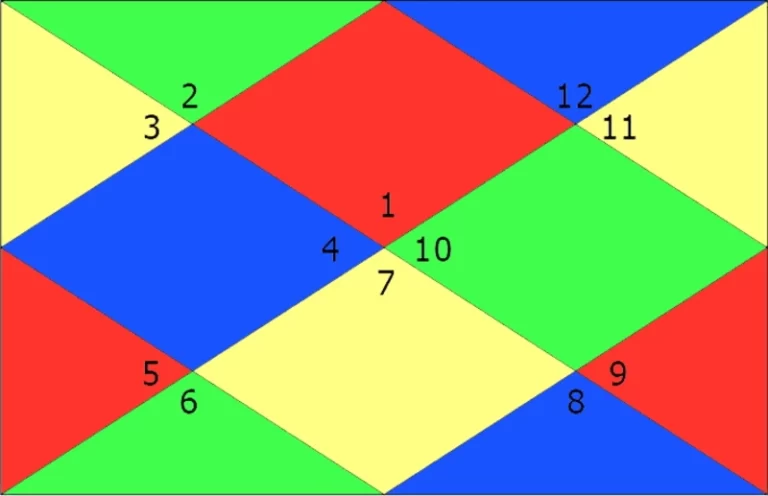Bhavas: exploring the significations of the 12 Houses of Kundali
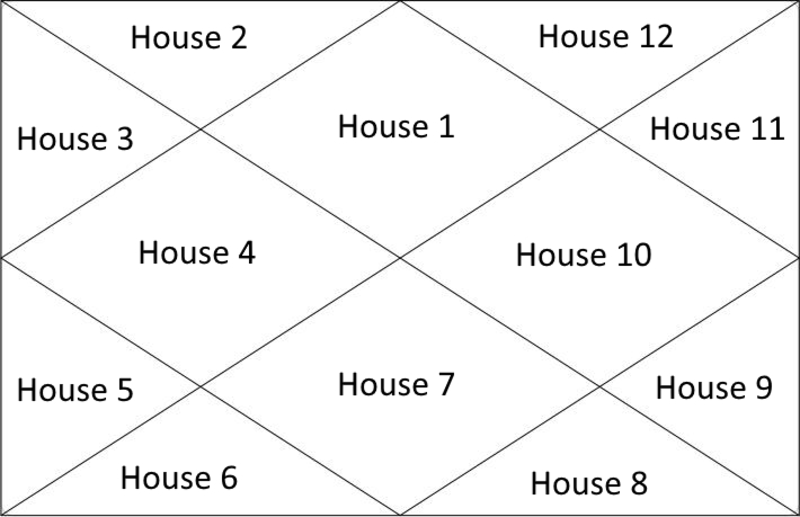
Bhavas – An Introduction:
In the realm of astrology, a horoscope functions as a cosmic blueprint, intricately detailing the spatial arrangement of planets and celestial entities during an individual’s moment of birth. This celestial chart is partitioned into 12 distinct segments, referred to as Bhavas or Houses, each emblematic of a unique facet of existence.
The Ascendant, situated at the Eastern horizon, undergoes alteration every two hours. Across a single day, synchronized with Earth’s rotational cycle, the 12 zodiacal signs sequentially ascend as the Ascendant, each reigning for about 2 hours. The zodiac sign housing the Sun assumes Ascendant status at dawn advances to the zenith by noon, takes residence in the 7th House upon evening’s arrival, and finally positions itself in the 4th House at midnight. Thus, the Bhavas amplify the intricacy of horoscopes exponentially beyond the mere utilization of zodiac signs.
In the realm of astrological interpretation, various house systems come into play, meticulously delineating the precise disposition of planets and signs across the twelve Bhavas. Each system employs a unique methodology for segmenting the zodiacal circle into twelve sectors, which are then allocated to the diverse Bhavas.
Various House Systems:
Here are some of the most commonly used house systems in astrology:
Placidus:
The Placidus house system, a time-honored and extensively employed methodology, partitions the zodiacal sphere into twelve dissimilar segments, their sizes unequal and contingent upon the Ascendant and Midheaven degrees. Founded on the principle of quadrant houses, this system’s essence lies in linking house determination to the orientations of the Ascendant and Midheaven angles.
Here are the steps to calculate your Placidus house cusps:
- Generate Your Natal Chart: Compile your birth data, including accurate birth time and location, then either craft a birth chart online or utilize astrology software to generate one.
- Compute the Ascendant: Ascertain the Ascendant (Rising sign), the zodiac sign emerging on the eastern horizon at your birth moment. This serves as the launch point for house cusp calculations. Resort to an online tool or astrology software to ascertain your Ascendant.
- Partition Ascendant to Midheaven Space: Section off the space between the Ascendant and the Midheaven (chart’s zenith) into three equidistant parts. This division delineates the cusps of the 2nd, 3rd, and 11th houses.
- Deduce Other House Cusps: The 4th house cusp rests diametrically opposite the Midheaven, positioned at the chart’s nadir. Meanwhile, to establish the cusps of the 5th, 6th, 8th, 9th, and 10th houses, segment the span between the 4th house cusp and the Ascendant into thirds. Project these designated points onto the ecliptic.
- Validate Interceptions: Within the Placidus system, a sign might be contained within a house, leading to an intercepted sign configuration where the house cusp resides in a distinct sign. Such occurrences can influence chart interpretation significantly and warrant attention.
Remember that this is just a basic guide to calculating Placidus houses. There are other factors that can affect house cusps in different situations.
Koch:
The Koch house system, yet another widely embraced approach, employs quadrant Bhavas as well. However, it employs an equitable division of the zodiacal circumference into twelve segments. Consequently, the alignment of houses might not correlate precisely with the specific degrees of the Ascendant and Midheaven.
Whole Sign:
The Whole Sign house system, an ancient and uncomplicated method harking back to early astrology, designates the complete zodiac sign encompassing the Ascendant to the first house. Subsequent houses then ensue in sequential order.
Equal:
The Equal House system bears resemblance to the Whole Sign approach by allocating each house even 30 degrees. Yet, it commences the first house from the degree of the Ascendant, as opposed to encompassing the entire sign.
Campanus:
The Campanus house system is an adapted variant of the Placidus approach, segmenting the zodiacal sphere into twelve uniform sectors grounded in the Ascendant’s degree. While rooted in the quadrant house principle, it employs an alternative technique for determining the positions of the house cusps.
Regiomontanus:
The Regiomontanus house system, akin to the Placidus approach but altered, dissects the zodiacal orbit into twelve equidistant portions. However, it employs an alternative mechanism for establishing the house cusps, centering around the birthplace’s meridian.
Which House System to use?
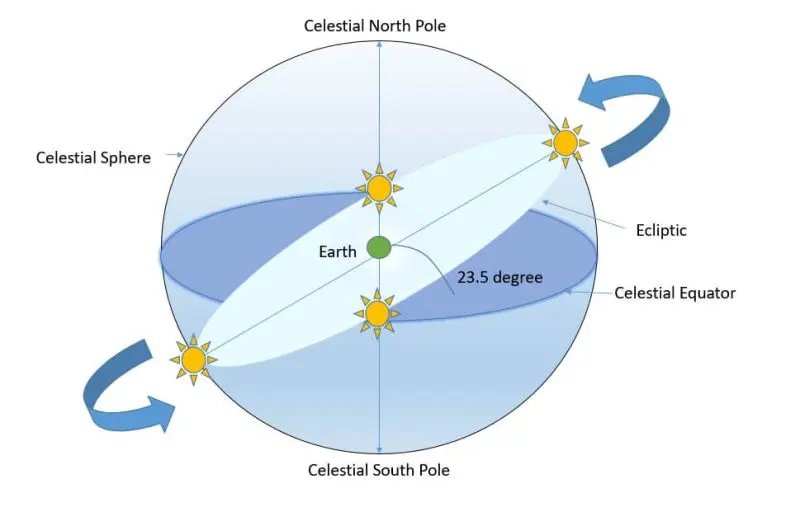
Various house systems populate the realm of astrology, though the aforementioned ones are frequently utilized. Astrologers’ preferences vary due to personal experiences.
The Equal House system, straightforward and uncomplicated, uniformly parcels the zodiac into twelve sections, commencing each Bhavas at the Ascendant degree. However, an issue emerges with latitude-dependent house size variation.
Consider an equatorial birth with a nearly vertical Ascendant rise—this results in equitable house sizes under Equal House. Yet, births at higher latitudes, where Ascendant ascent is gentler, experience distorted house dimensions, with some considerably larger.
Asymmetric house systems like Placidus or Koch also pose issues. Inexact divisions of the zodiac can lead to uneven house sizes, notably at extreme latitudes or near the Poles.
Furthermore, Placidus may result in entirely confined Bhavas within a single sign, leading to unbalance in interpretation. Planetary placements in heavily skewed sign-centric Bhavas disrupt the equilibrium, impacting elemental influences.
An unequal house system can face challenges near the North and South poles due to nearly vertical Ascendant ascent. Placidus, tied to extreme Ascendant and Midheaven angles, yields irregular, diminutive house sizes in these zones.
In extreme scenarios, Placidus can eradicate or overlap houses, hindering chart interpretation.
Unequal systems are intricate to calculate and construe, unlike simpler methods like Equal or Whole Sign. Precise birth data is vital due to the sensitivity of cusp calculations, where minor discrepancies yield major differences.
We advocate the Equal House System, where each House = Rasi = 30°.
Numbered anticlockwise from the Ascendant, Bhavas signify diverse life domains. The Ascendant (Lagna) denotes the eastern horizon at birth, housing the first Bhava. Subsequent Bhavas follow, spanning 30 degrees each.
Each Bhava symbolizes a life facet—personality, health, wealth, family, relationships, career, spirituality, etc. Celestial bodies in a horoscope inhabit these houses, directing influences to respective life areas.
Table for Bhava Synonym:
| Bhava | Synonyms |
| 1 | Kalpa, Udaya, Adya , Tanu , Janma, Vilagna, Hora, Moorti, Anga, Vapu |
| 2 | Swa, Vak, Artha, Bhukti, Nayan, Kutumba, Dhana, Chitt, Dravya, Kosha |
| 3 | Purusha, Dushchikya, Vikram, Sahodar, Veerya, Dhairya, Karna, Sahaj, Sahoth, Parakram |
| 4 | Griha, Pataal , Vriddhi, Hibuk, Kshiti, Matri, Vidya, Yana, Ambu, Geha, Sukha, Bandhu, Chatustaya, Jala, Veshma, Bandhu, Hrid, Turya |
| 5 | Pratibha, Dhi, Deva, Raja, Pitunandan, Panchak, Putra, Buddhi, Mantra, Vivek, Udar, Sut, Vidya, Tanaya, Atmaja |
| 6 | Vrana, Rog, Amsha, Shastra, Bhaya, Ripu, Shastha, Kshata, Ari, Shatkona, Vyasan, Chor, Shatru, Kalaha |
| 7 | Kaam, Jamitra, Gaman, Kalatrasampat, Dyuna, Asta, Saptam, Yuvati, Jaya, Chittoth, Madan, Bharya, Dara, Dyun, Bharta, Smara, Ramani |
| 8 | Vivara, Randhra, Ayush, Ashta, Rana, Mrityu, Vinash, Chhidra, Nasha, Yamya, Nidhan, Guhya, Maran, Anta, Laya |
| 9 | Guru, Dharm, Shubh, Tapas, Nava, Bhagya, Pitri, Marg |
| 10 | Maan, Vyapara, Meshuran, Madhya, Gagana, Rajaspad, Karma, Agna, Aaspad, Kham, Taat, Gagan, Vyom |
| 11 | Bhaav, Ekadash, Upanthya, Aya, Labha, Aagam, Aapti, Prapti |
| 12 | Vyaya, Ripha , Dwadash, Antyabh, Pratyam |
In astrology, Karakas (also known as significator or indicators) are planets or celestial bodies that represent specific areas of life or experience. Karakas are important in astrological interpretation as they provide insight into the nature and potential of the different factors and influences affecting an individual’s life.
Bhava Classifications:
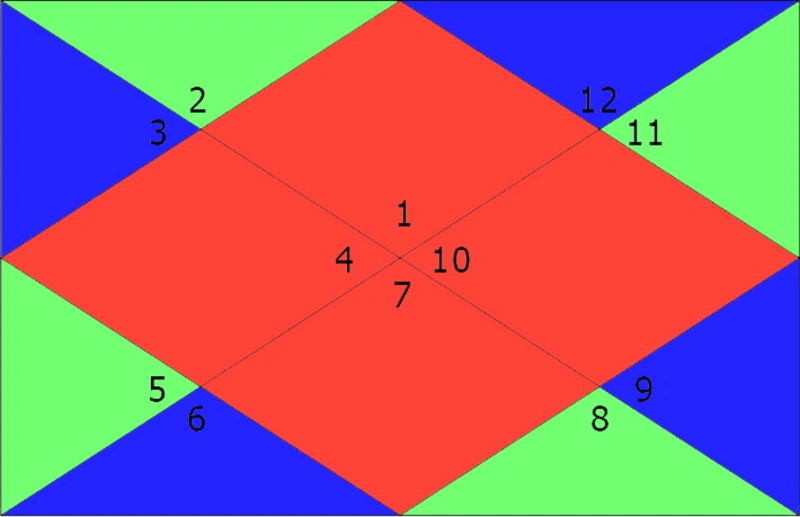
Kendra:
Kendra houses, also termed angular houses, hold paramount importance in a natal chart. Comprising the first, fourth, seventh, and tenth houses, these quarters are situated at the chart’s cardinal junctures, signifying pivotal zodiacal points.
Panaphara:
Succeedent houses trail the angular houses in a birth chart, embodying stability, accumulation, and growth. Comprising the second, fifth, eighth, and eleventh houses, these quarters signify progression and advancement.
Apoklima:
Cadent houses trail the Succeedent houses in a birth chart, epitomizing change, adaptability, and learning. Comprising the third, sixth, ninth, and twelfth houses, these sectors symbolize transitions and receptivity to new experiences.
Trikonas:
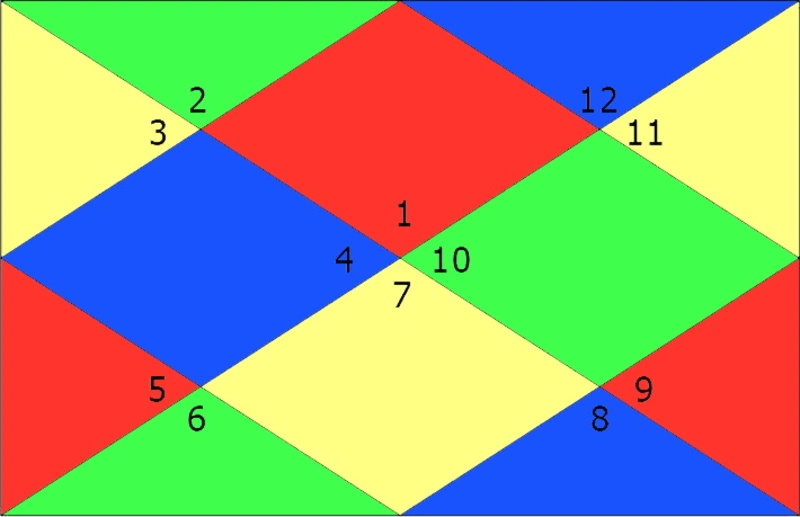
Kona houses acknowledged as trine houses, hold a propitious stance in Vedic astrology. The trio includes the fifth, ninth, and first houses (the latter also being a Kendra house). These houses delineate an equilateral triangle within the birth chart, signifying favorability and support.
Dusthanas:
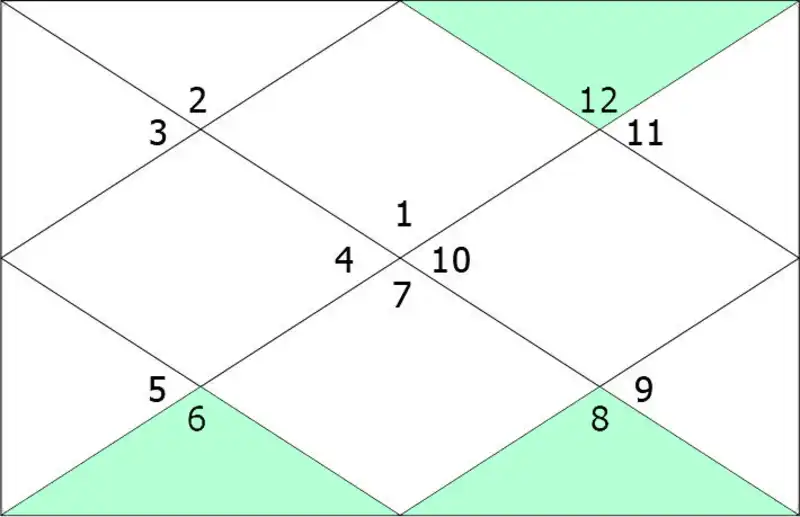
Within Vedic astrology, “Dusthana” signifies the “malefic” or arduous houses within a natal chart. The term translates to “unfavorable places” or “affliction houses.” The primary Dusthana houses encompass the sixth, eighth, and twelfth houses.
Karkatwas of the 12 Houses:
House I:
The initial house, often termed the Lagna or Birth Ascendant, commands profound importance by embodying an individual’s fundamental essence. It mirrors the self, the corporeal form, and the persona projected to society. This domain unveils traits, appearance, and vital life energy. The Sun, epitomizing the soul, serves as the Karaka or prime signifier of this house. Thus, the Sun’s position and potency in the natal chart profoundly shape personality, self-assurance, and life direction.
House II:
The second house bears vital connotations concerning familial ties, amassed riches, and belongings. It presides over financial affairs, tangible assets, and ancestral legacy. Furthermore, this sphere envelopes the faculties of speech and communication, instrumental in articulating ideas and desires. Jupiter, the generous and expansive celestial body, assumes the role of Karaka for the second house. Jupiter’s placement and influence within the natal chart can unveil tendencies toward generosity, magnanimity, and prospects for material abundance.
House III:
The third house wields influence over a spectrum of life facets, encompassing siblings, valor, dialogue, brief voyages, and mental tendencies. It envelops the dynamics of sibling and cousin connections, alongside the mettle and resolve to confront hurdles. Moreover, this domain governs communication prowess, flexibility, and readiness to embark on brief journeys and undertakings. Mars serves as the Karaka for the third house, signifying energy, assertiveness, and an impetus propelling endeavors and goal attainment.
House IV:
The fourth house, commonly known as the abode of the heart and home, presides over matters of the domestic sphere, maternal influence, and emotional equilibrium. It signifies one’s origins, ancestral legacy, and tangible assets connected to land and transportation. This house further mirrors the quest for emotional anchoring and foundational support in one’s journey. The Moon serves as the Karaka for the fourth house, epitomizing nurturing and motherly qualities. The Moon’s positioning within the natal chart shapes emotional wellness, openness, and the longing for solace and steadiness.
House V:
The fifth house establishes deep links with creativity, intellect, learning, offspring, and speculative fortunes. It epitomizes the outlet for creative aptitude, cognitive pursuits, and the pursuit of knowledge. This domain additionally presides over childbirth, progeny, and the potential for parenthood. Furthermore, the fifth house aligns with ventures of speculation and luck in games of chance. Jupiter, in its role as Karaka for the fifth house, amplifies the essence of sagacity, inspiration, and spiritual aspirations.
House VI:
The sixth house commands authority over health, service, indebtedness, disputes, and adversaries. It mirrors life’s trials and obstacles while highlighting the capacity to surmount adversity. Concerns encompassing health, ailments, and medical matters also fall within its purview. Saturn takes on the Karaka role for the sixth house, embodying discipline, accountability, and the karmic outcomes of actions. Saturn’s arrangement within the natal chart can unveil resilience in the face of challenges and the potential for triumph through diligence and persistence.
House VII:
The seventh house is intricately woven with alliances, marriage, bonds, and aspirations. It unravels the intricacies of interpersonal engagements, encompassing romantic liaisons, professional collaborations, and substantial ties. This house unveils the attributes an individual seeks in a life companion and the essence of their associations. Venus undertakes the mantle of Karaka for the seventh house, epitomizing love, aesthetics, and equilibrium. The positioning of Venus within the natal chart assumes paramount significance in molding the individual’s stance towards relationships and their potential for emotional bonding.
House VIII:
The eighth house harbors profound connotations concerning longevity, metamorphosis, communal assets, and enigmas. It stands as a conduit to realms beyond the material, incorporating the esoteric, concealed facets, and veiled dimensions of existence. Additionally, this domain aligns with pivotal shifts, alterations, and unforeseen occurrences. Saturn shouldered the role of Karaka for the eighth house, magnifying its transformative essence and underscoring the call to embrace change and spiritual evolution.
House IX:
The ninth house envelops spiritual enlightenment, advanced learning, extensive voyages, serendipity, and faith-based convictions. It encapsulates the individual’s pursuit of profound wisdom, philosophical revelations, and the journey toward ultimate truths. Long-haul expeditions, sacred pilgrimages, and international bonds also fall within its spectrum. Jupiter takes center stage as the chief Karaka for the ninth house, intensifying the import of divine wisdom, guidance, and the tenets of dharma (righteousness).
House X:
The tenth house, frequently recognized as the realm of vocation and societal stature, commands jurisdiction over an individual’s occupation, public perception, and accomplishments in the world. It mirrors ambition, the impetus for achievement, and acclaim within society. This domain equally underscores the rapport with authoritative figures and the aptitude to shoulder roles of accountability. The Karakas for the tenth house comprises the Sun and Saturn. The Sun embodies leadership, distinctiveness, and self-assertion, whereas Saturn underscores the value of discipline, diligence, and duty in attaining career objectives.
House XI:
The eleventh house commands influence over acquisitions, ambitions, social affiliations, and camaraderie. It embodies the realization of aspirations, the amassing of riches, and the prospect of affluence. Furthermore, this realm guides an individual’s aptitude to cultivate and uphold friendships, social networks, and advantageous unions. In alignment with its previous role, Jupiter resumes its position as the Karaka for the eleventh house, reinforcing the propitious likelihood of realization and the blessings of prosperous circumstances.
House XII:
The twelfth house aligns with themes of solitude, spiritual evolution, setbacks, and covert adversaries. It mirrors the yearning for introspection, detachment from mundane quests, and the potential for transcendental insight. This domain equally guides encounters in distant lands, confinement, and costs incurred during seclusion. In line with its prior role, Saturn reassumes the mantle of Karaka for the twelfth house, accentuating the value of self-awareness, renunciation, and the eventual emancipation from material entanglements.
Conclusion:
Bhavas or Houses hold integral significance in astrological interpretation and analysis. In astrology, the birth chart or horoscope is sectioned into 12 Bhavas, each delineating a distinct life facet. The houses are numerically designated and organized in a counterclockwise sequence, emanating from the Ascendant or Rising sign.
Every house symbolizes a specific life realm—be it self-expression, career, relationships, finances, or spirituality. The arrangement of planets within diverse Bhavas, coupled with each house’s ruling planet, furnishes insights into multifaceted aspects of an individual’s existence.
The gravity of Bhavas in astrology rests in their capacity to paint a comprehensive portrait of an individual’s persona and life. These houses assist in pinpointing strengths, vulnerabilities, prospects, and hurdles across varying domains, and offer guidance for personal growth and evolution.
Comprehending the role of Bhavas in astrology aids in forecasting future occurrences and making prudent decisions concerning pivotal life spheres, like professions, relationships, and finances. By dissecting the houses within a birth chart, astrologers extract valuable perceptions into an individual’s life journey and potential accomplishments in assorted arenas.
I aspire for this article to provide you with assistance. Should you discover value within these words, kindly contemplate sharing them with your loved ones. I invite you to spare a moment to offer your thoughts and appraisals below. For further remarkable content akin to this, I encourage you to delve into our website. Additionally, I extend an invitation to subscribe to my YouTube channel for forthcoming materials of similar nature. Lastly, feel unrestrained to establish a connection with me through social media. Wishing you a splendid day ahead!
हरि ॐ तत्सत्
FAQs:
Frequently Asked Questions (FAQs) about Bhavas in Vedic Astrology:


